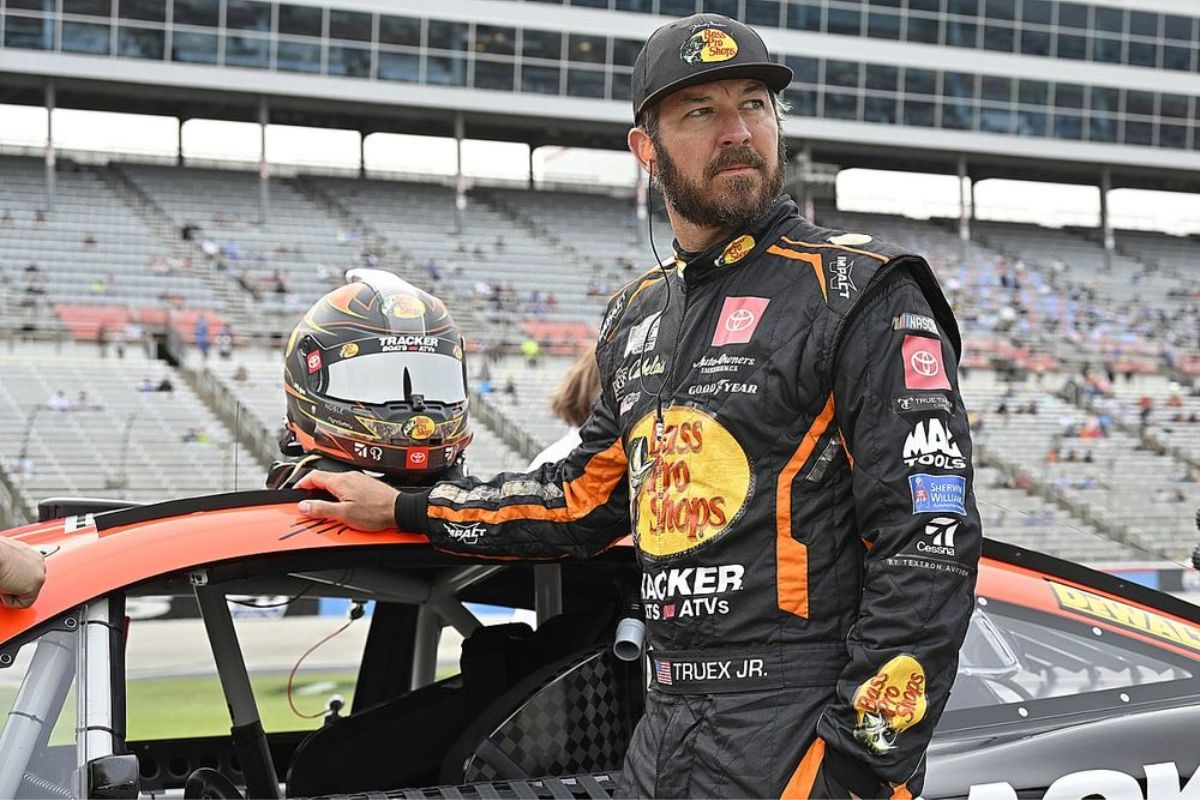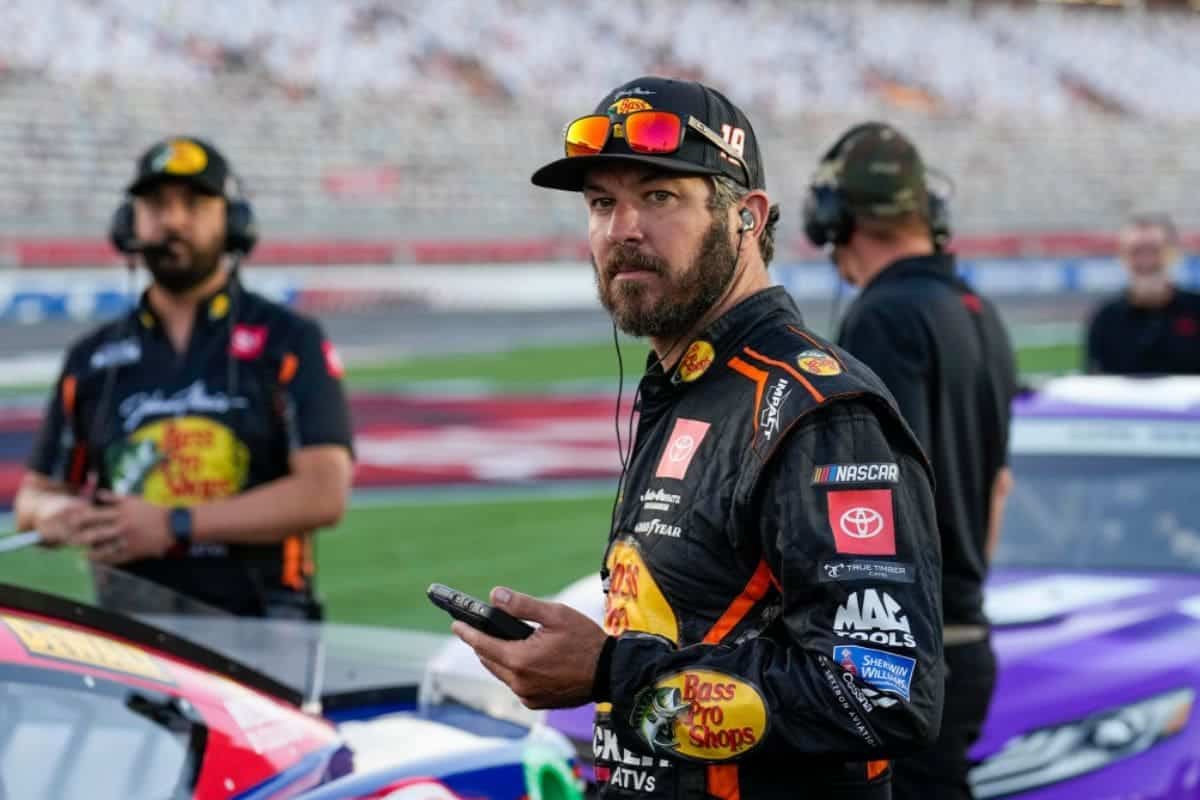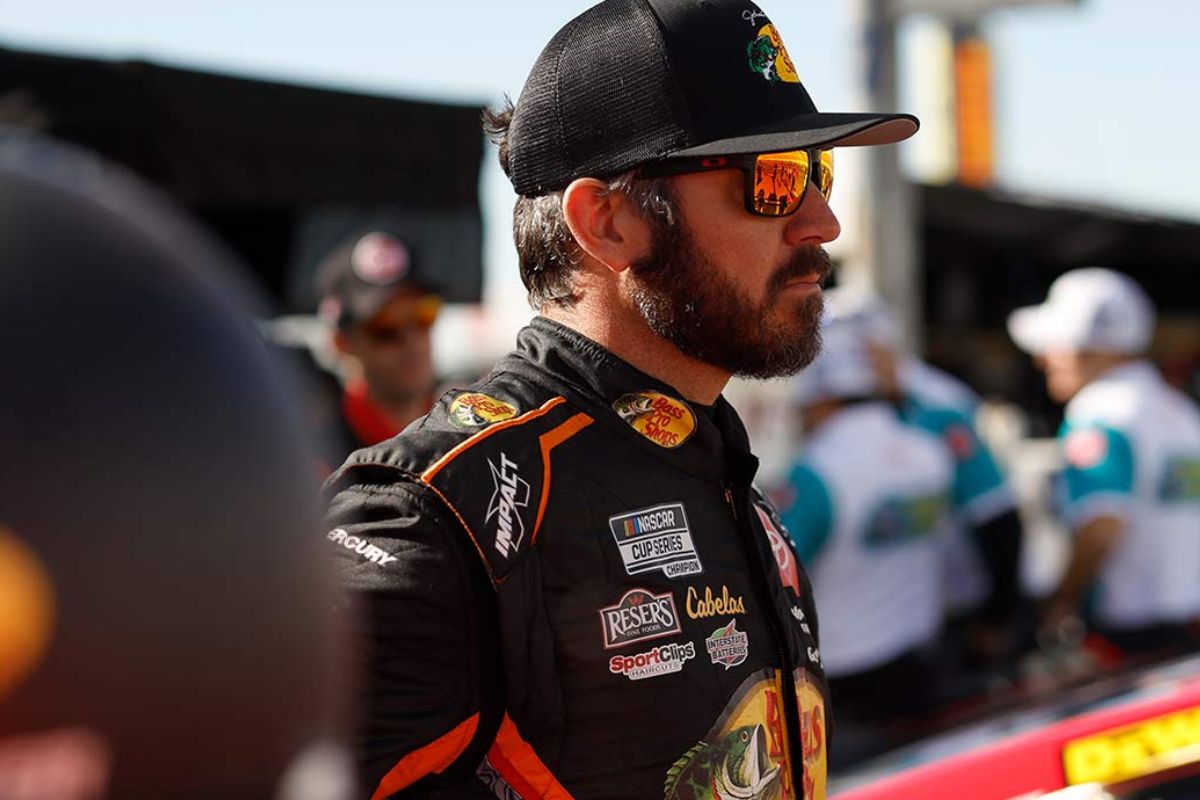HMS Great Dismisses Truex Jr.’s Accusations: HMS Great has categorically dismissed Truex Jr.’s accusations, highlighting the intricate nature of NASCAR’s competitive tensions and strategies. This decision has ignited discussions within the racing community, emphasizing the subtle understanding of racing dynamics and ethics. Analysts like Letarte and Gordon offer a perspective that shows the legality of Hamlin’s tactics, situating it firmly within NASCAR’s regulatory framework. This controversy showcases the delicate balance between aggressive competition and sportsmanship. The legend’s surprising counter to Truex Jr.’s claims invites a deeper exploration into the complex interplay of strategy, skill, and the ethical dimensions governing motorsports. Further insight into this matter reveals a multifaceted analysis.
Key Takeaways
- HMS Great publicly refuted Truex Jr.’s accusations regarding race conduct.
- The legend provided a surprising verdict, siding with the strategic nature of NASCAR racing.
- Emphasized the importance of tactical execution and rule adherence in motorsports.
- Highlighted the subjective interpretation of racing incidents within the NASCAR community.
- The dismissal stirred discussions on competitive ethics and strategies in racing.
Truex’s Missed Opportunity
In a race defined by strategic prowess and endurance, Martin Truex Jr.’s missed opportunity at Richmond Raceway encapsulates the unpredictable nature of motorsports, despite leading for more than 200 laps. This outcome highlights the critical importance of tactical acumen, not just speed and control, in determining the victor of a race. As the event unfolded, Truex Jr. showcased exceptional skill and dominance, positioning himself as the frontrunner through a significant portion of the contest. Yet, motorsports are as much about seizing moments as they are about consistent performance.
The climax of Toyota Owners 400, marked by a controversial final restart, shifted the dynamics unexpectedly. Denny Hamlin, Truex Jr.’s teammate, emerged as the beneficiary of the crucial moment, clinching victory in a manner that sparked debate and scrutiny. This incident illustrates a quintessential aspect of racing—the fine line between triumph and disappointment, where strategic decisions can redefine the outcome in mere seconds.
Truex Jr.’s experience at Richmond Raceway serves as a compelling case study in the relentless pursuit of excellence in motorsports. It emphasizes that leading a race for an extended duration does not guarantee victory. Instead, adaptability, strategic foresight, and the capacity to capitalize on fleeting opportunities are equally essential. Such instances reinforce the idea that motorsports are not solely a test of speed but a multifaceted challenge demanding a blend of tactical intelligence, mental resilience, and technical skill. Consequently, Truex Jr.’s missed opportunity is not merely a reflection of misfortune but a proof to the complex, unpredictable tapestry of competitive racing.
Letarte and Gordon’s Analysis
Exploring the intricacies of the restart controversy, NASCAR experts Steve Letarte and Todd Gordon present a clear perspective, highlighting how Hamlin’s tactical execution aligned with the sport’s regulations. Letarte, a seasoned veteran of the NASCAR pit, dissected the situation, suggesting that Hamlin’s decision to initiate an early roll at the restart was less about bending the rules and more about a strategic play to leverage momentum. This move, according to Letarte, was a calculated effort to gain a competitive edge, showcasing Hamlin’s experience and understanding of the fine line within NASCAR’s rulebook.
Todd Gordon, echoing Letarte’s analysis, emphasized the permissible nature of Hamlin’s action. He emphasized that NASCAR’s guidelines accommodate a degree of strategic freedom in restart scenarios, allowing drivers to exploit timing to their advantage, provided they do not outright violate the established start zone parameters. Gordon’s analysis further illuminates the depth of strategy involved in NASCAR racing, where knowledge of the rules and the ability to apply them under high-pressure conditions can often be as critical as the raw speed of the car.
In their combined analysis, Letarte and Gordon offer a masterclass in the subtleties of NASCAR’s racing regulations and the strategic thinking that underpins successful racing tactics. Their insights suggest that Hamlin’s actions, far from being a straightforward infraction, were a sophisticated exercise in the application of NASCAR’s complex rule framework, reflecting a broader understanding of racing as a chess game of speed, timing, and regulatory acumen.
“In my opinion, you lay back three or four feet and as you enter the restart zone, you start to roll. I mean a mile an hour. It’s not much. Because if your momentum is going forward a mile an hour faster than the leader then when you both step on the gas, you’re gonna carry that mile an hour all the way down into turn one. These are two veterans. The amount of race winds on the front row is outstanding. And that’s why I like the no call because I like the artistic, the human element of the driver.” ( Letarte )
“I feel like Martin Truex, when we looked at that, we played it back several times, listened to it, he may just starting to be picking up a little bit of momentum coming to him. He’s three feet back. He knows that NASCAR won’t call that. But I think if you look at it, if Denny waits until he gets to restart zone, Martin’s going to have that little bit of run coming to him.” ( Gordon )
Examining Truex’s Complaints
Amidst the roar of engines and the high stakes of competition, Martin Truex Jr.’s complaints about Denny Hamlin’s race tactics have stirred significant debate within the NASCAR community. Truex Jr. has voiced his grievances regarding what he perceives as an unfair tactic by Hamlin, claiming that he was crowded during the race, which potentially compromised his performance. This issue prompts a closer examination, not just of the incident itself, but of the broader implications it holds for racing conduct and competitive ethics.
Steve Letarte’s analysis offers a new perspective on the matter. He acknowledges that while Hamlin’s actions did not leave Truex Jr. with the ideal amount of space, they were not outside the bounds of typical racing competitiveness. This viewpoint suggests a need to balance competitive drive with fair play, a theme that resonates deeply within professional racing circles.
- Racing Dynamics: The incident highlights the complex interplay between aggression and restraint that drivers must navigate in high-stakes competitions.
- Competitive Ethics: Letarte’s comments highlight the thin line between strategic tactics and unfair advantage, prompting a discussion on the ethical boundaries of racing.
- Perspective and Perception: The difference in interpretation between Truex Jr. and Letarte reflects the subjective nature of racing incidents, emphasizing the importance of diverse viewpoints in understanding competitive dynamics.
Support for Hamlin’s Strategy
While the debate over Truex Jr.’s complaints continues, attention also turns to the support for Hamlin’s strategy, with Kenny Wallace and Clint Bowyer providing differing insights on the matter. Wallace staunchly defends Hamlin’s actions, viewing them through the lens of strategic acumen necessary for clinching a win in the fiercely competitive environment of motor racing. He attributes Truex Jr.’s loss not to any alleged foul play on Hamlin’s part but to the latter stages of the race where Truex Jr.’s team’s pit stop performance failed to measure up. Wallace’s perspective shines a light on the multifaceted nature of racing strategy, where every decision and action, including pit stop efficiency, plays an essential role in the outcome.
Contrastingly, Bowyer presents a more simple stance, acknowledging the controversy that has arisen from Hamlin’s restart tactics. His uncertainty reflects the broader conversation within the racing community about the fairness and sportsmanship involved in such strategies. Bowyer’s viewpoint suggests an underlying complexity in evaluating racing tactics, where the line between competitive ingenuity and questionable actions seems blurred.
This divergence of opinions among racing veterans highlights the inherent subjectivity in evaluating race strategies. Wallace’s defense of Hamlin emphasizes the importance of strategy and execution in securing a win, whereas Bowyer’s hesitance to fully endorse Hamlin’s tactics brings attention to the ethical considerations that often accompany competitive sports. Together, their insights provide a thorough understanding of the controversy, emphasizing both the tactical brilliance and the moral ambiguities that define racing.
NASCAR’s Inner Circle Weighs In
The discussion on Hamlin’s controversial Richmond restart has pulled in NASCAR’s inner circle, with figures like Wallace and Bowyer offering diverse perspectives that reflect the broader debate within the sport’s community. Their contributions highlight the multifaceted nature of competitive racing, where interpretations of moves on the track can diverge greatly even among seasoned professionals. This diversity of opinion not only enriches the conversation but also emphasizes the inherent complexities of NASCAR’s racing dynamics and the subjective nature of rule enforcement.
- Varied Interpretations: The differing viewpoints from Wallace and Bowyer illustrate the subjective nature of racing incidents. What one sees as a strategic masterpiece, another might view as a questionable action, showcasing the clear understanding required to fully grasp NASCAR’s competitive subtleties.
- Community Engagement: The involvement of NASCAR’s inner circle in this discussion fosters a deeper involvement with the fanbase. By openly discussing such contentious issues, it encourages fans to explore the intricacies of the sport, promoting a more informed and passionate fan community.
- Impact on the Sport: The debate surrounding Hamlin’s move and the varied perspectives from key figures like Wallace and Bowyer serve to highlight the evolving nature of NASCAR. As strategies and interpretations evolve, so too does the sport, adapting to new challenges and perspectives.
I’ll have to go back and watch but I thought I initially said he went early. We asked NASCAR and they said it was good. Replays showed it was obviously closer. By the start/finish, they were all but back door to door. The race was won on pit road.” ( Bowyer )
News in Brief
The examination of Truex Jr.’s accusations against HMS reveals a complex interplay of strategy, competition, and sportsmanship within NASCAR. Analysis from seasoned professionals such as Letarte and Gordon emphasizes the multifaceted nature of racing strategies, ultimately supporting Hamlin’s approach.
The broader consensus within NASCAR’s inner circle suggests a dismissal of Truex Jr.’s claims, highlighting the inherent challenges and tactical decisions that define the sport. This discussion not only sheds light on the specific incident but also reflects the broader dynamics and ethos of NASCAR racing.
Our Reader’s Queries
Q. Who has Martin Truex Jr drive for?
A. Martin Lee Truex Jr., born on June 29, 1980, is an American professional stock car racing driver. He currently competes full-time in the NASCAR Cup Series, piloting the No. 19 Toyota Camry XSE for Joe Gibbs Racing.
Q. Does Martin Truex have a son?
A. In his personal life, he is the younger sibling of Martin Truex Jr., who claimed the Cup Series championship in 2017 and secured two Busch Series titles. Additionally, he is the son of Martin Truex Sr., a former driver in the Busch Series.
Q. Did Martin Truex Jr retire?
A. At 43 years old, Truex contemplated retirement last year before ultimately opting to continue his racing career by signing a one-year contract extension with Joe Gibbs Racing in August. The previous year, Truex had announced his decision in June. Despite his seasoned experience, Truex remains focused on achieving one significant milestone: clinching victory at the Daytona 500.
Q. What is the age difference between Ryan and Martin Truex?
A. Martin, aged 42, and Ryan, 30, are two brothers with careers spanning over a decade apart. Martin boasts an impressive track record with numerous victories and a coveted Cup championship under his belt. Meanwhile, Ryan continues to strive for his first NASCAR national series win, marking a notable difference in their respective racing journeys.
ALSO READ: Martin Truex Jr. Reveals Next Gen Car Challenges: Insider Secrets Unveiled!



